The body of children under 1 year of age (the chest period) is more susceptible to various diseases than older children, and very often parents are faced with the common cold in their child. The mucous membrane of the nose of babies is very sensitive, so respiratory diseases are almost inevitable. The main causes of the common cold in newborn babies are viruses, allergies, inflammatory processes. But, and at the same time, in children under 2.5 months of age, the presence of dwarfs does not indicate a child’s disease at all. Immediately after birth, at first it’s very “dry” in the inner cavity of the nose, then it becomes too “wet” - this is a normal process of adapting the body to external conditions, this is physiological runny nose. In infants, the full work of the mucous membrane begins after 10 weeks of life, so sputum in the nose is a physiological and natural process. It is not necessary to treat it. It is important to recognize it and you just need to provide comfortable air in the room of the newborn. Let's take a closer look at the types of runny nose and how to help your child breathe normally.
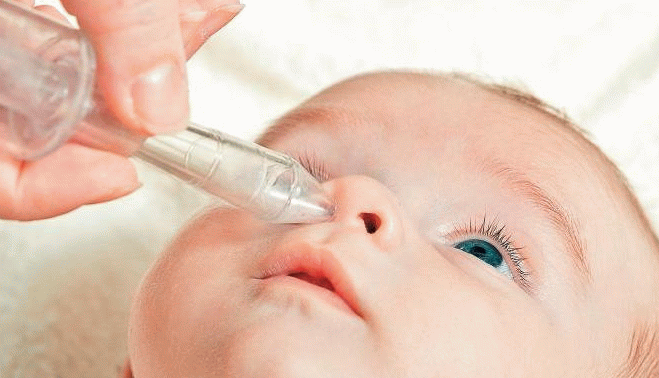 Types and causes of the common cold
Types and causes of the common cold
A runny nose for a baby is very tiring, because the baby still cannot breathe through the mouth, the nasal passages are narrow, and the swollen mucous membrane of the nose makes it difficult to fully breathe. When a child’s nose is blocked, he eats poorly, sleeps poorly, and is naughty. In the early days, a runny nose is accompanied by profuse watery discharge from the nose, an increase in temperature (mainly with colds or hypothermia) and lasts up to 2 weeks. With severe runny nose around the nose and upper lip, swelling and irritation may occur.
Symptoms
The main symptoms are snot 🙂
- Profuse watery discharge from the nose.
- Deterioration of the general condition of the child, the appearance of temperature from 37ºС is possible.
- When there is a stuffy nose or a runny nose, the baby refuses the breast (from the bottle), begins to take frequent breaks when sucking.
- Shortness of breath appears and normal breathing is disturbed.
- If the runny nose has an allergic nature, in addition to watery discharge, sneezing attacks, itching in the nose, redness of the eyes appear.
- Babies involuntarily pull handles to their nose, rubbing it.
- The child has a disturbed rhythm of life (sleep, wakefulness and nutrition).
Runny nose may be:
- Physiological. At the beginning of the article they said that this is a natural process of the body.
- Infectious or viral. The causes of the disease are bacterial or viral infections. Sapelki is a protective reaction of an organism to a viral infection.
- Allergic. It is caused by various allergen substances (dust, products (if the child is on hepatitis B, then everything that the mother eats, gets the milk with the baby), for flowering plants, household chemicals, etc.). At the same time, there is not only a runny nose, but also tearing of the eyes.
- Vasomotor. It occurs due to the presence of problems with the vessels of the nasal mucous membranes (in infants is quite rare).
[sc: ads]
How and how to treat a runny nose in infants
We treat a physiological and infectious (viral) runny nose
- As already mentioned at the beginning of the article, a physiological runny nose in an infant does not require special treatment. Viral rhinitis is a natural reaction of the body that helps the nasopharynx cope with the virus or bacteria. The main treatment is to prevent the mucus from drying out. This requires maintaining the room optimum temperature and humidity no more than 22 degrees (you can maintain humidity using ordinary cups with water, spray from a spray bottle, use special humidifiers, put an aquarium).
- Moisturize the nasal mucosa with normal saline (or normal saline): at the rate of 1 teaspoon of salt (preferably sea. If there is no sea, use ordinary boiling water) in 1 liter of warm boiled water. Instill 1 drop in each nostril. (READ THE ARTICLE: how to dig in the nose of a child). IMPORTANT! saline (purchased or homemade) use only as drops, as washing can not be used!
- Calendula or Yarrow herbs: 1 teaspoon per glass of water in a water bath. Cool and instill in the baby half a pipette into each nostril.
- If the runny nose is strong, then clean the baby’s nose from crusts and thick mucus with a special small enema to remove the snot (sold at any pharmacy.) You can use the usual “pear”. There are special nasal aspirators. Or very carefully remove the mucus with baby cotton swabs. (See article how to clean the nose of a newborn baby different ways)
- Drop in breast milk. In the composition of breast milk there are substances that will help protect the baby’s mucosa from “harmful” microbes.
- You can drip droplets of Aquamaris (based on sea water).
- A decoction of chamomile helps (if the child does not have allergies to it).
- Bathe a newborn in medicinal herbs. A bathtub with calendula, sage and yarrow. We take 25 g of herbs, brew and leave in a thermos for 2 hours. The resulting broth is poured into a bath with a water temperature of not more than 37 degrees.
- The most common folk remedy for treating the common cold in infants is to drip freshly squeezed beet or carrot juice into the nose, half diluted with water or olive or vegetable sunflower oil.
- Another folk remedy is to drip sea buckthorn oil into the nose.
- You can drip aloe juice or Kalanchoe. Juice must be diluted with boiled water, 1 part juice 10 parts water. Bury 5 times a day.
- Breathe in eucalyptus oil. Pour water into the aroma lamp and drip 5-10 drops of eucalyptus oil, heat and leave in the room for 15-20 minutes, the child will breathe in pairs.
- Lubricate places of irritation with baby cream.
Allergic rhinitis
With an allergic rhinitis, swelling of the nasal mucosa occurs and only a doctor can prescribe treatment!
Prevention of a runny nose caused by an allergy - to exclude contact of the baby with the allergen: do wet cleaning more often, you need to abandon the use of household chemicals, for example, carpet cleaners, polishes, cleaning powders and gels, air fresheners, wash clothes only with phosphate-free baby powders or simple soap (see how to wash baby things) To ensure clean and humid air in the room, use a humidifier, a vacuum cleaner with a water filter, a salt lamp, an ionizer.
Remedies for the common cold for the smallest
- Nasal drops for babies from the first days of life: Aquamaris, Aqualor, Nazivin, Vibrocil, Dr. IOM, Salin and Pinasol.
- Warming ointments and tinctures: ointment of calendula, St. John's wort, Vitaon, pulmex baby (lubricate the feet), Dr. IOM (lubricate the feet).
- Aromatherapy: thuja oil (put 2 drops per glass of boiling water to evaporate in the room with the baby); Tea Delaw Oil (from 6 months, 1 drop per pillow at bedtime).
What a baby should not do when treating a cold
- You can not rinse the nose with enemas, pears and other pumping devices;
- Do not bury antibiotics;
- Do not suck snot from the inner areas of the nose;
- Vasoconstrictor drugs only as directed by your doctor.
In some cases, medical attention may be needed if:
- The child's breath became wheezing;
- Redness of the throat is observed with a runny nose;
- The child refuses food and begins to lose weight;
- Suspect headaches in a child;
- Bloody discharge from the nose;
- Runny nose lasts longer than a week;
- If the baby is 3-6 months old. temperature is below normal;
- If the baby has a temperature of 40 ° C does not decrease, but continues to grow.
We treat a runny nose!
Video consultation: how to treat a runny nose in an infant
https://www.youtube.com/watch?v=4fIBnajW_Fc
School of Dr. Komarovsky: Runny nose and colds
Actress Anastasia Basha asked Dr. Komarovsky about runny nose - where does it come from, how and how it is treated, how dangerous it is ... It’s obvious that it’s impossible to avoid a runny nose, but it’s possible to make childhood, snotty all the time, become childhood, snotty episodically, and these episodes will be short, easy, rare. We are listening to the doctor’s recommendations!


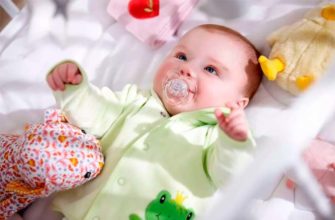
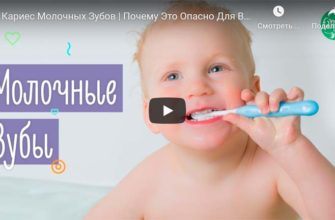
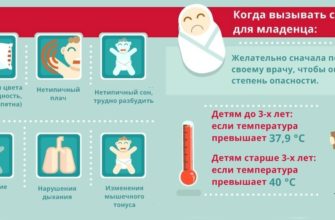
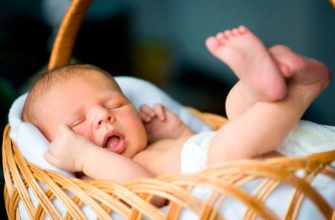
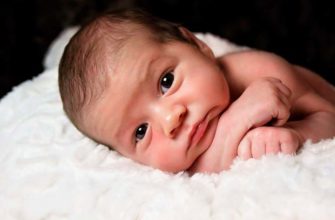


I have two children, they have already grown up, but a small grandson, you need to carefully clean the baby’s nose with a small enema, of course he doesn’t like this procedure, we scream ... and also my mother taught me, you need to instill breast milk in the nose, it helps a lot!
It is best to treat with folk remedies, or with drops for newborns, for example, “nasol baby”, etc.
We have already worked out a cold treatment regimen.We rinse with Aquamaris, then we drip Derinat and at night another Fornos or generally any vasoconstrictor. And after 3-5 days there are no snot. Well, we remove the mucus with an aspirator during the day.
And at one time the children's “Akvalor” helped us a lot. There is just sea water in the composition, it moisturizes the mucous membrane well and softens the crusts. My daughter, by the way, calmly endured it, almost did not cry.
Well, of course, ease your breathing! Because otherwise you may, for example, have problems with your ears. But it is best to act on immunity, among other things. I recommend Tilaxin for immunity from drugs. For punching my nose, I sometimes use naphthyzine myself.
We have also worked out the scheme. We clean with saline (1 teaspoon of sea salt, plain or iodized) per 1 liter of warm boiled water. Free Aqua Something. And then droplets of Rino-Baby. For older Rinoxil children in the spray.
And by the way, girls and grandmothers, up to 3 years of age, you can’t do anything, neither an enema, nor a spray. You can damage the blood vessels.
Useful article! A doctor’s friend enlightened me and recommended using Quix - this is a very convenient spray based on Atlantic water. I myself used it when I was pregnant and the baby is now treating him, the usual Quicks can be from 3 months. It helps to decompose the nose, if it is blocked, and wash the whole byak, so as not to become sinusitis. So another great option to combat nasal congestion.
tell me and otrivin aspirator will not harm the ears of the child? After all, when you suck out the little nozzles, then there is a lot of pressure on the ears in the above privacy of the membranes? !!! It is not possible to damage it? have studies been carried out?
Usually an acute runny nose, if the condition of the child remains satisfactory, in the vast majority of cases, does not require intensive treatment.
somehow we caught a runny nose in the kindergarten. went to the pediatrician and he advised us to rinse our nose with morenasal. this turns out to be our domestic salt-based spray. I thought at first whether to take it or not, but the pharmacist assured me that it does not contain chemistry and is absolutely safe for children, unlike aerosol sprays that can cause otitis media. and cheaper than aquamaris, which my acquaintance first suggested I take before we visited the doctor. I took a moraine nasal taste, and the spray was really great. began to rinse and after a few days the runny nose receded.
Moderators, correct, pliz, article. For a long time the entire civilized world refused to bury milk and juices in the nose. Thank!
Vibrocil is contraindicated in children under 1 year old, pinosol - up to two years.